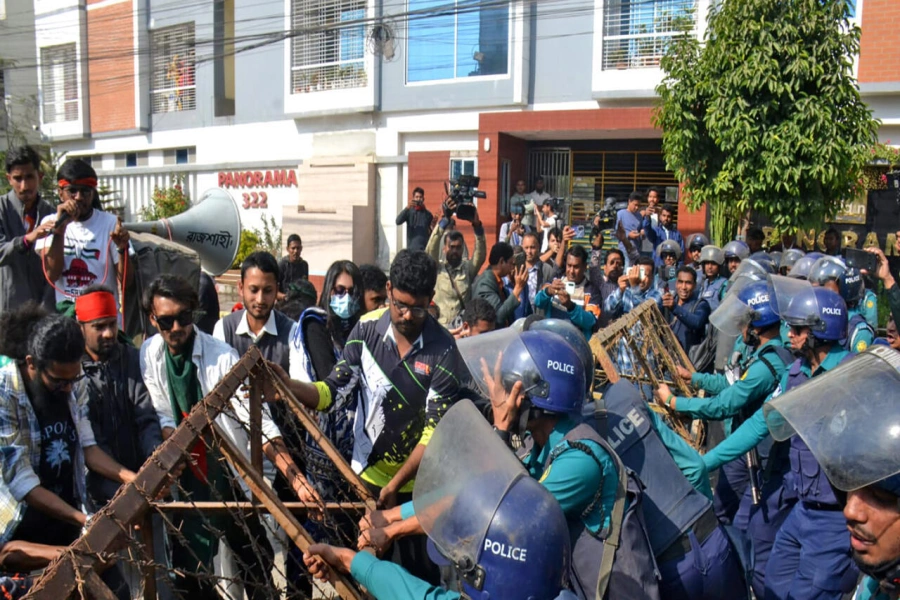Discovering another universe or another dimension has been the dream of humankind for long. With no such luck so far, humans’ search for some extraterrestrial space or intelligence continues.
When virtual reality (VR) was introduced it gave the mankind a new ray of hope and allowed to connect to a completely different human world. Driven with the same enthusiasm to explore a new world, three classmates -- Sajesh Khadgi, Saurav Bajracharya and Bobby Basnet -- started learning the basics of Virtual Reality (VR) from Google and YouTube to come up with Nepal’s first VR application, Nepal VR.
While the world itself was still exploring the basics of VR, Nepal was too far behind in terms of VR and technology when the trio conceptualized the app. And because of this, they lacked proper mentor in the initial phase.
But, Kushal Vaidhya— another co-founder of Nepal VR—gave the trio the much needed guidance and helped them set up their idea as a business model with Semantic Creation in April 2014. With an aim to promote Nepal’s tourism sector that had been badly affected after the 2015 Gorkha Earthquake, the four developed the application and launched it on September 29, 2016.
A five-day virtual mission of UK to Nepal begins to explore ren...

After the earthquake, many hospitality businesses were hit hard and were yearning for the pre-quake visibility as well as business transaction. Nepal VR has tied up with various local hotels, and has helped put restaurants as well as other hospitality businesses in the map.
And after over a year of research, Semantic Creation set up new venture, Visualize VR, under which Nepal VR was launched. The developers have also created numerous games, software and applications, including AppKosh and EQ Volunteers Nepal.
Since its inception, Nepal VR garnered numerous positive responses from its users. “People who used the application were amazed to see how they could be anywhere in the world without having to leave the four walls of their room. Even in the Kathmandu Mini Maker Faire, where we had participated in September, the visitors were elated to experience a new world through Nepal VR,” shared Sajesh.
If an idea is great, people will certainly welcome it. And so it happened with the Nepal VR team. They won the Seedstars Kathmandu Competition 2016 and secured third place in the Seedstars World 2017. They also stood first in the LOCUS Hackathon, Geeklist #hack4good 0.2 Kathmandu and ReNepal Hackathon. They are currently competing to bag the Most Innovative Product title in the ICT Award 2017, slated for August 17.
Nepal VR has been developed with the gaming software Unity, and is available in the android platform. It already has about 8,000 downloads since its launch and about 100-200 daily visitors. The app is the second version.
“It needs to be coupled with a VR headset for a complete experience. We have stressed on user interface in order to appeal the users and to make their interaction more fluent. The app has two modes: normal and VR mode. Even if one doesn’t have a VR headset or the phone lacks gyroscope sensor, they can still use the app,” said Bobby. The company realizes that it needs to promote the product more often and stay updated with technological advancements, he added.
The app has so far integrated photos of more than 70 places of Nepal, including the three durbar squares, Swayambhunath Stupa, Pashupatinath Temple, Keshar Mahal and Pokhara, among others. These photos are captured from a 360° camera.
Since the product is not perfect, the developers are making constant changes. They have added a feature for the users and their clients to embed their photos and links on their own website and as a result, Saurav said, user interaction in theirs and their clients’ sites have increased.
They are also working on the third version of the app and will soon integrate videos as well as audio narratives, which will make the users’ VR experience even more realistic and informative. In the long run, they aim to replicate similar versions in an international platform. Since the Nepal VR team is also working on augmented reality (AR), users can expect to have games like Pokémon GO made in Nepal.




































